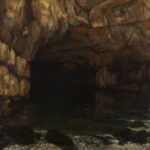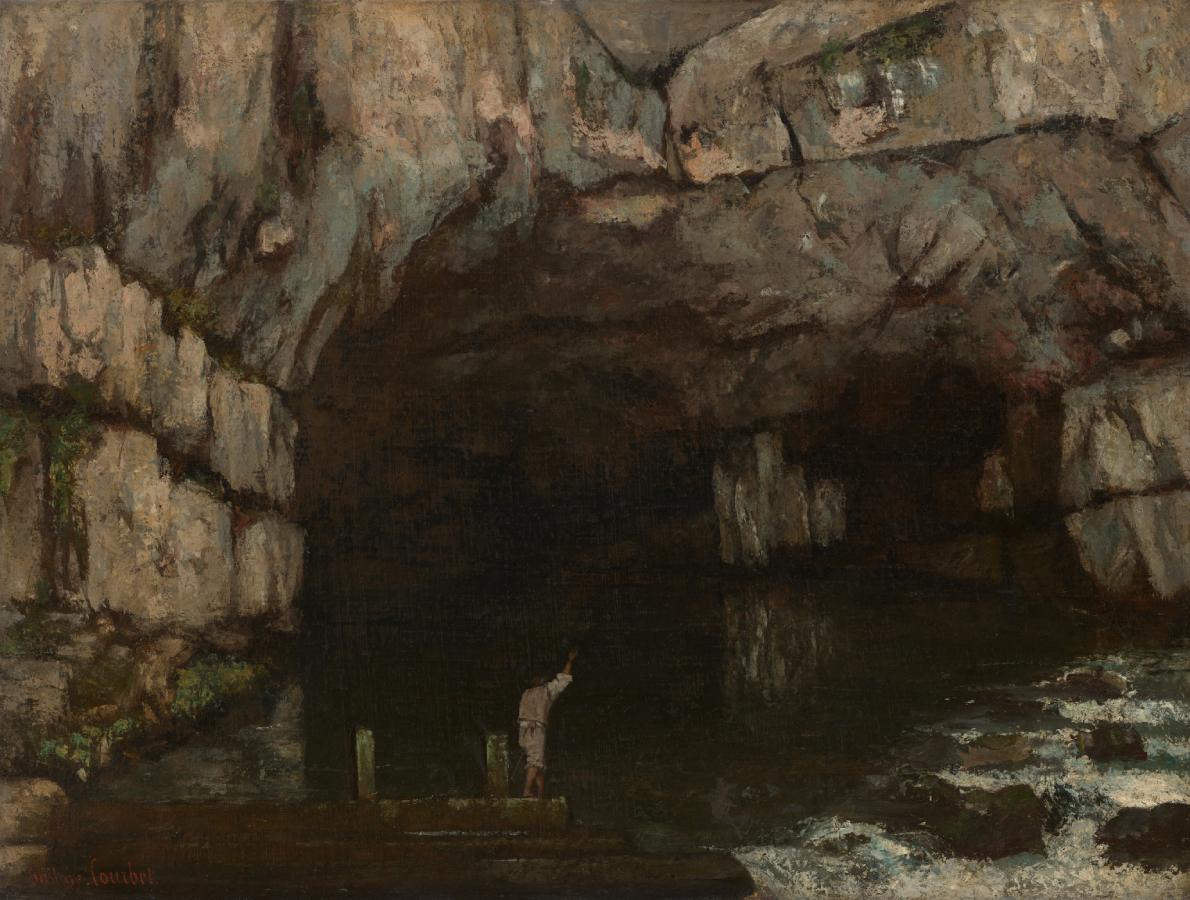Courbet, Gustave (1819-1877)
La Grotte de la Loue (The Cave of the Loue)
1864
Oil on canvas, 98.4 x 130.4 cm
National Gallery of Art, Washington
Courbet painted events and scenery primarily from his native Ornans, a village in the remote Franche-Comté region. A proponent of realism, he challenged traditional ideas about art by depicting simple peasants and rustic scenery with dignity and on the grandscale usually reserved for history paintings. La Grotte de la Loue depicts the source of the Loue river and surrounding massive rock formations, a scene of intense and primitive beauty. Eliminating all but rocks and water in this dense geometric composition, Courbet heightened the contrast between dark cavern and still water inside and rugged limestone rocks tinted soft pink, blue, and gray and flowing white water outside the cave. Except in the diminutive figure, Courbet used the unorthodox palette knife technique to apply irregular layers of pigments, creating a roughly worked surface imitating the textures of the setting and evoking the physical presence of the terrain. Long interested in the natural history of his region, including its geology, Courbet was scrupulously accurate in depicting the setting, a famous site near Ornans. One of several variant images of the site, the National Gallery painting is distinctive for the inclusion of a spear fisherman, whose presence gives scale to the immensity of the overhanging rocks and unseen depths of the cave. (NGA)
Compare:
 Courbet, Gustave (1819-1877)
Courbet, Gustave (1819-1877)
La source de la Loue
c.1864
Buffalo AKG Art Museum, Buffalo
